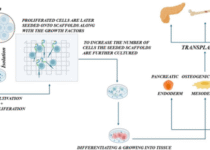What Role Rest and Proper Foot Alignment Play in the Healing Process for Plantar Fasciitis
A sharp pain near the heel can turn simple movements into exhausting challenges. Many people dealing with plantar fasciitis discover that healing requires more than medication—it demands patience, consistency, and an understanding of how the body repairs itself. Rest and alignment work together to restore natural foot mechanics, helping the fascia regain its strength and flexibility over time.
Rest Allows Inflamed Fascia Fibers to Repair Naturally
Inflammation in the plantar fascia develops from repetitive tension and microtears. Rest gives these overworked fibers time to mend, allowing the tissue to gradually rebuild its structure. A plantar fasciitis doctor often recommends pausing high-impact activities such as running or jumping to prevent further irritation of the heel and arch.
During this period, the body focuses on cellular repair. Reduced movement lowers the constant pull on the fascia, improving blood flow and collagen production in the affected area. This natural recovery process becomes more effective when guided by a plantar fasciitis specialist who tailors rest intervals to the individual’s condition and lifestyle demands.
Reduced Activity Prevents Further Strain on the Heel
Cutting back on physical strain doesn’t mean giving up mobility. Instead, the goal is to protect the heel while maintaining circulation. A plantar fasciitis doctor might suggest low-impact exercises like swimming or stationary cycling to maintain strength without pressuring the inflamed tissue.
This balance helps prevent chronic inflammation. By easing repetitive stress, patients avoid deepening the injury and allow the fascia to reset. A plantar fasciitis specialist may also recommend supportive braces or taping methods during rest phases to prevent overstretching while the tissue heals.
Proper Foot Alignment Redistributes Weight Evenly
Improper alignment places uneven stress across the heel and arch, worsening pain and inflammation. Correct alignment allows the foot to distribute weight naturally, minimizing pressure points that trigger flare-ups. A plantar fasciitis doctor uses gait assessments to identify imbalances that contribute to tissue strain.
By adjusting alignment through custom orthotics or supportive footwear, tension across the plantar fascia decreases. This adjustment not only eases discomfort but also promotes a more natural walking motion. Over time, proper alignment becomes a key factor in preventing recurring symptoms.
Balanced Posture Supports Consistent Arch Recovery
The way a person stands affects how weight moves through the feet. Slouching or leaning shifts the body’s load unevenly, causing one side of the arch to absorb more impact. Correcting posture ensures each step supports healthy arch recovery rather than compounding stress.
A plantar fasciitis specialist often evaluates the alignment of the hips, knees, and ankles to restore proper balance. Strengthening the lower leg muscles further stabilizes posture, reinforcing the fascia and preventing future inflammation. This interconnected approach makes recovery more consistent and lasting.
Rest Periods Limit Microtears During Tissue Healing
Continuous strain prevents tissue from repairing. Rest breaks that occur at regular intervals allow microtears in the fascia to close and reinforce. A plantar fasciitis doctor may structure rest cycles throughout the day to promote healing while maintaining some level of mobility.
Short rest periods are particularly useful for individuals who spend long hours standing or walking. By reducing repetitive tension, these intervals protect against chronic damage. Over time, tissue integrity improves, leading to stronger support for the heel and arch.
Correct Alignment Lessens Tendon Pulling and Stress
The plantar fascia connects the heel to the forefoot, working closely with tendons in the lower leg. Poor alignment increases tension across these tendons, pulling the fascia unevenly and extending recovery time. A plantar fasciitis specialist focuses on correcting these mechanical stresses through alignment-focused therapy.
With consistent alignment training, tendon strain reduces, and the fascia functions more efficiently. This harmony among muscles, tendons, and ligaments helps restore the natural arch, easing pain and improving foot flexibility. Maintaining alignment during daily movement is just as important as during treatment sessions.
Controlled Movement Restores Normal Walking Rhythm
Healing plantar fasciitis doesn’t mean complete immobilization. Controlled movement keeps joints flexible and muscles active while protecting the injured fascia. A plantar fasciitis doctor might introduce stretching routines or gentle range-of-motion exercises to restore a normal gait pattern.
By reintroducing movement carefully, patients avoid stiffness and compensate less with improper steps that could delay recovery. Gradual progression in activity helps retrain the feet to bear weight evenly, reinforcing the fascia’s ability to handle daily motion without re-injury.
Supportive Footwear Maintains Stable Heel Positioning
Shoes designed for stability are essential during and after recovery. Supportive footwear keeps the heel in the correct position, reducing pressure on the inflamed fascia. A plantar fasciitis specialist often recommends shoes with firm midsoles, deep heel cups, and arch support tailored to the patient’s foot structure.
Wearing proper footwear consistently maintains alignment and cushioning through daily activities. Over time, this stability allows the fascia to adapt to natural movement patterns while staying protected from excessive stretching or impact. This simple yet powerful measure can make long-term relief from plantar fasciitis sustainable.



